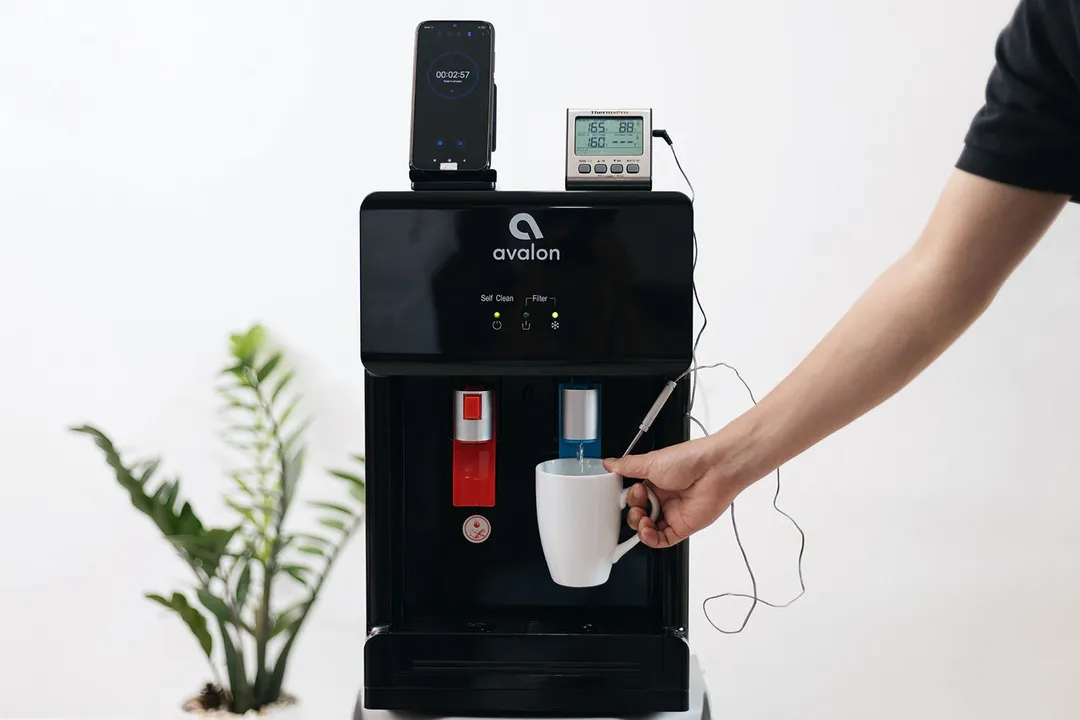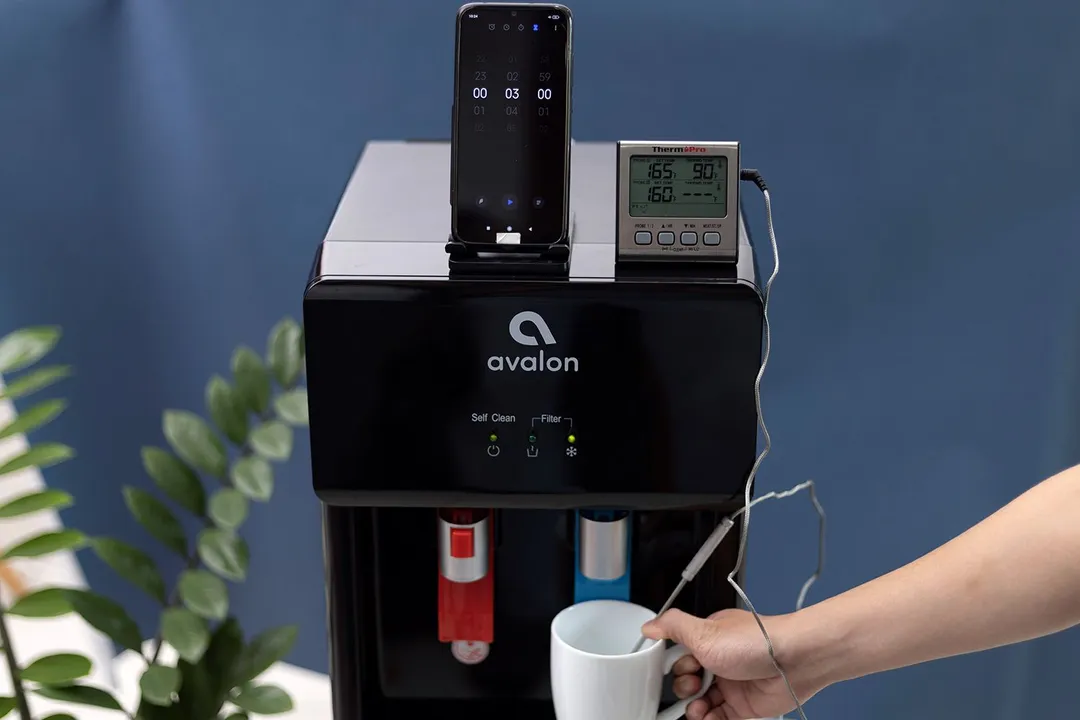Our recommendations are made independently through Research & Testing. We may receive commissions from purchases made via our links.
Water Cooler Dispenser Test Method v1.0
Find out how we test water cooler dispensers. Our unbiased tests are used for rating the best performing dispensers for the home or office.
A water cooler dispenser is a home or office appliance that you are likely to use multiple times a day. Moreover, its use in the home will differ substantially from that in an office or other work environment.

In light of this, our hot and cold water tests will let you know the exact serving capacity and performance of each machine. Our ease of use and design appraisals highlight everything from dispensing water, to daily sanitation requirements, to periodic and regular maintenance.
In this way, we help you choose the best water cooler dispenser for your family home, personal use, or office.
Overall Score Weighting
The overall score is a rating on a scale of 1 to 10. Of the three categories that make up the final score, each is weighted to a different percentage:
- Performance - 50%
- Ease of Use - 25%
- Design - 25%
How We Evaluate Water Cooler Dispenser Performance
Performance scores consist of two key tests: one for hot water and the other for cold water. The performance of the dispensing mechanism is dealt with under ease of use.
- Cold water test: 60%
- Hot water test: 40%
Our cold water test: This test determines the best hourly serving capacity of each machine at a temperature between 50-54 ℉ (10‒12 ℃). There is only one component to this test.
Our hot water test: In this test, we measure the top performing temperature, reheating time, flow rate, back-to-back and hourly serving capacity.
The hot water score of 1 to 10 is differential weighted in the following way:
- Temperature: 45%
- Heating time: 35%
- Flow rate: 20%
How We Evaluate Water Cooler Dispenser Ease of Use
The most important evaluation is how easy it is to dispense water based on each machine’s design. For this, we score the dispensing mechanisms such as buttons, levers, faucets, touch panels, or sensor dispensing mechanisms.
We pay particular attention to the hot water safety mechanism and the viability of touchless or one-action dispensing. We also consider the design of the dispensing booth and drip tray.
Another important feature is the ease of changing the water bottle or installing point-of use (POU) water filters. For bottom loaders and POU filtered machines we also check the working status of any indicators.
Finally, we look at daily sanitation and how feasible it is to completely disinfect the dispensing mechanisms as well as water spouts. We also evaluate the process of cleaning the drip tray, front panel, and body.
How We Score for Ease of Use
Ease of use accounts for 25% of the total score. There are four subcategories, each with a unique evaluation scale so machines can be evaluated as objectively as possible:
- Dispensing water: 40%
- Hot water safety: 15%
- Changing bottle or filter: 15%
- Cleaning: 30%
For cleaning, the final score is calculated based on daily sanitation (40%) and periodic descaling (60%). We add extra points to the daily sanitation score for features such as UV or Ozone self-disinfectant systems.
For periodic descaling, we evaluate the ease of opening up and reassembling the cold water tank. We also carefully evaluate the design of the water separator or baffle and check whether clear instructions for cleaning are provided in the manual.
How We Evaluate Water Cooler Dispenser Design
When evaluating the design of each machine, we first look at the overall build quality, the accessibility of parts, and the degree to which the design aids or hinders actual performance.
In addition, we award a specific score for water inlet controls. These include the design of the water guard and bottle needle for top loaders, the water probe and pump design for bottom loaders, and the filter assembly for POU machines. Dispensing mechanisms are evaluated separately in the ease of use scores.
We also evaluate the panel and indicators, specifically focusing on original and functional design. The working status of indicators is evaluated in ease of use scores.
The drip tray is scored for its material quality, overall design, and how well it can be secured in place.
How We Score for Design
Design accounts for 25% of the overall score, and the design score itself is made up of four scoring categories.
- Build quality: 45%
- Water inlets: 20%
- Panel & indicators: 25%
- Drip tray: 10%
Each of these categories has a descriptive score of 1 to 10 points and the final score is proportionally weighted. We score for material quality, workmanship, and stand-out design features.
Test Developers
Roger Shitaki is a writer, author, and editor. His niches are household appliances, health & wellness, and travel. He’s a freelance contributor to a Tokyo lifestyle website and a leading ophthalmology magazine in Asia.
Lap is Head of the Research, Testing, and Review Team (RTR Team) at HealthyKitchen101.com, where he directs and supervises the testing of kitchen gadgets and appliances.
Nguyen Ntk is a graphic designer, photographer, and videographer whose philosophy centers around respecting and celebrating the beauty of reality. Through his lenses, Nguyen strives to capture the true essence of objects and events, showcasing and highlighting authentic features without distortion or exaggeration.




